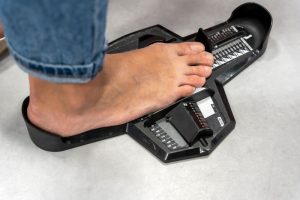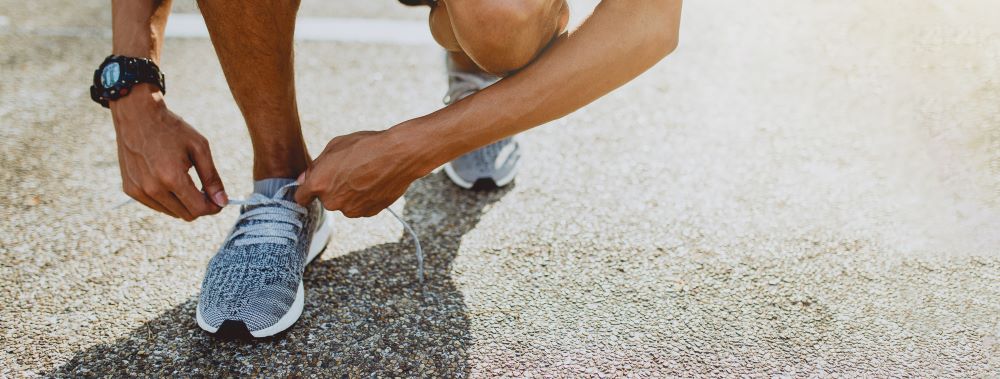Running is a popular form of exercise that requires the right gear, including a good pair of running shoes. One of the most important factors to consider when choosing running shoes is how tight they should be. But how tight is too tight? And how loose is too loose? In this article, we will discuss the importance of finding the right fit for your running shoes and how to determine the correct tightness.
Key Takeaways in This Article
- Finding the right fit for running shoes is important for preventing injuries and maximizing performance.
- Determining the correct shoe size is the first step in finding the right fit.
- It is important to find the right balance between a snug fit and comfortable feel.
Understanding the Importance of Running Shoe Fit
When it comes to running, having the right pair of shoes is very important. One of the most important factors to consider when selecting running shoes is the fit. Wearing shoes that do not fit correctly can lead to discomfort, pain, and even injury.
The right fit will depend on each runner’s individual needs and preferences. Some runners prefer a snug fit, while others prefer a looser fit. However, there are some general guidelines that can help runners find the right fit for their shoes.
Firstly, it’s important to ensure that there is enough space in the toe box. The toes should be able to move freely and not feel cramped. At the same time, the shoe should not be too loose that the foot slides around inside the shoe.
Secondly, the shoe should fit snugly around the midfoot and heel. This will help to provide support and stability during the running motion. The heel should not slip out of the shoe, and there should not be any excessive pressure on the sides of the foot.
Thirdly, it’s essential to think about what kind of running will be done in the shoes. Different kinds of running require different types of shoes. For example, long-distance runners may prefer shoes with more cushioning, while sprinters prefer more lightweight shoes.
Overall, finding the right fit for running shoes is essential for comfort, performance, and injury prevention. Runners should take the time to try on different shoes and consider their individual needs and preferences before making a purchase.
How to Determine the Correct Shoe Size
When it comes to running shoes and the health of your feet, finding the right fit is crucial for performance, comfort, and injury prevention. Here are some tips to help you determine the correct shoe size.
Measuring Your Foot Size
 The first step is to measure your foot size. Use a tape measure or ruler to measure your foot from the back of your heel to your longest toe. Then, use a shoe size chart to determine your size. Keep in mind that different brands may have different sizing, so it’s always a good idea to try on shoes before buying.
The first step is to measure your foot size. Use a tape measure or ruler to measure your foot from the back of your heel to your longest toe. Then, use a shoe size chart to determine your size. Keep in mind that different brands may have different sizing, so it’s always a good idea to try on shoes before buying.
Another way to measure your foot size is to use a Brannock device, which is a tool commonly found in shoe stores. The device measures the length and width of your foot and provides a more accurate measurement.
Considering Foot Shape
In addition to foot length, foot shape is important when choosing running shoes. Some people have narrow feet, while others have wide feet. Some have high arches, while others have flat feet. It’s important to consider these factors when choosing shoes.
If your feet are narrow, try shoes with a snug fit and a narrow heel. If you have wide feet, try shoes with a broader toe box and a more flexible upper. If you have high arches, look for shoes with good arch support. If you have flat feet, look for shoes with a lot of cushioning and support.
Overall, it’s essential to choose shoes that are comfortable and fit well. Don’t be afraid to try on several pairs of shoes before deciding. The right fit can make all the difference in your running performance and comfort.
Identifying the Right Tightness for Running Shoes
When it comes to running shoes, the right fit is essential for a comfortable and injury-free experience. One of the most important aspects of fit is the tightness of the shoe. In this section, we’ll explore how to identify the right tightness for running shoes.
The Thumb Rule
One popular method for determining the right tightness for running shoes is the thumb rule. This involves leaving a thumb’s width of space between the end of the shoe and the tip of the longest toe. This ensures that there is enough room for the foot to expand during exercise while still providing enough support.
However, it’s important to note that this rule may not work for everyone. Some people may need a tighter or looser fit depending on their foot shape and running style. It’s a good idea to try on different sizes and styles to find the best fit for your individual needs.
The Pinch Test
Another way to gauge the tightness of running shoes is the pinch test. This involves pinching the material of the shoe at the widest part of the foot. If there is excess material that can be pinched, the shoe may be too loose. If the material is too tight to pinch, the shoe may be too tight.
Remembering that the pinch test is just a general guideline and may not be accurate for everyone. Some runners may prefer a tighter or looser fit based on their individual preferences and needs.
Overall, finding the right tightness for running shoes is a personal process that requires trial and error. By using methods like the thumb rule and pinch test, runners can find a comfortable and supportive fit for their individual needs.
Effects of Wearing Running Shoes That Are Too Tight
Physical Discomfort
When a runner wears running shoes that are too tight, they may experience physical discomfort. The tightness can cause pressure points on the feet which can lead to blisters, calluses, and even corns. The toes may also be cramped, which can cause pain and discomfort during running.
In addition to discomfort, wearing tight running shoes can also cause poor foot circulation. This can cause numbness or tingling in the toes and feet, which can be uncomfortable and even painful.
Potential Injuries
 Wearing running shoes that are too tight can also increase the risk of potential injuries. The tightness can cause the feet to become unstable, which can lead to ankle sprains or other injuries. The cramped toes can also increase the risk of developing conditions such as bunions or hammertoes.
Wearing running shoes that are too tight can also increase the risk of potential injuries. The tightness can cause the feet to become unstable, which can lead to ankle sprains or other injuries. The cramped toes can also increase the risk of developing conditions such as bunions or hammertoes.
Furthermore, if the shoes are too tight, the runner may compensate by altering their gait or stride, which can put additional stress on the knees, hips, and lower back. This can lead to overuse injuries such as runner’s knee or IT band syndrome.
In conclusion, it is important for runners to wear running shoes that fit properly. Shoes that are too tight can cause physical discomfort and increase the risk of potential injuries. It is recommended to try on shoes and make sure there is enough room in the toe box and that the shoes fit snugly but not too tight.
Effects of Wearing Running Shoes That Are Too Loose
Reduced Performance
Wearing running shoes that are too loose can have a negative impact on a runner’s performance. When shoes are not snug, the foot can slide around inside the shoe, causing the runner to lose stability and control. This can result in a slower pace and a less efficient stride. Additionally, loose shoes can cause the runner’s foot to move around too much, leading to blisters and other foot injuries.
Risk of Tripping
Another potential consequence of wearing running shoes that are too loose is an increased risk of tripping and falling. When the shoe is not properly secured to the foot, it can shift around during the running motion, causing the runner to stumble. This can be especially dangerous if the runner is on uneven terrain or running at a high speed.
To avoid these negative effects, it is important for runners to ensure that their shoes fit snugly but not too tightly. A properly fitting running shoe should allow for some movement of the foot, but your foot should not slide around inside the shoe. Runners should also ensure that their laces are tied tightly, but not so tight that they cut off circulation or cause discomfort.
In summary, wearing running shoes that are too loose can lead to reduced performance and an increased risk of tripping and falling. It is important for runners to find the right fit for their shoes to ensure a safe and enjoyable running experience.
Tips for Choosing the Right Running Shoes
When it comes to running, it’s critical to have the right pair of shoes. It can make all the difference. Here are a few tips to help you choose the right running shoes:
Try Shoes in the Afternoon
Feet tend to swell throughout the day, so you should try on running shoes in the afternoon or evening. This is usually when your feet are at their largest. This will ensure you choose a shoe that fits comfortably throughout your run.
Wear Your Running Socks
When trying on running shoes, be sure to wear the socks you typically wear while running. This will give you a better idea of how the shoes will feel during your actual run.
It’s also important to consider the following factors when choosing running shoes:
- Arch support: Look for shoes that provide the best arch support for your foot type.
- Cushioning: Choose shoes with enough cushioning to absorb shock and protect your joints.
- Fit: Make sure the shoes fit snugly but not too tight, with enough room for your toes to move.
- Breathability: Look for shoes with breathable materials to keep your feet cool and dry.
By keeping these tips in mind, you can choose the right pair of running shoes to help you perform your best and avoid injury.
Conclusion
Finding the right fit for running shoes can be a daunting task, but it is essential for injury prevention and optimal performance. After considering all the factors, it is clear that the fit should be snug but not too tight.
A snug fit ensures the foot is secure and stable within the shoe, preventing any unnecessary movement that could cause blisters or other injuries. However, a shoe that is too tight can cause discomfort and even restrict blood flow, leading to numbness or tingling in the feet.
It is also important to consider the type of running and the individual’s foot shape and size when selecting the right fit. For longer-distance running, a slightly looser fit may be more comfortable, while for shorter sprints, a tighter fit may be necessary for speed and agility.
Overall, it is recommended to try on several pairs of shoes and test them out with a few runs before making a final decision. Pay attention to any discomfort or pain during the trial period and make adjustments accordingly. With the right fit, running can be a comfortable and enjoyable experience.


